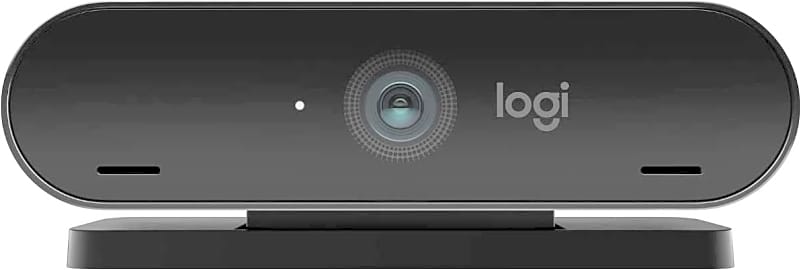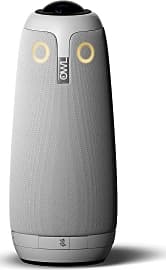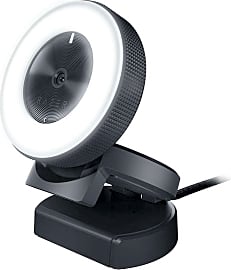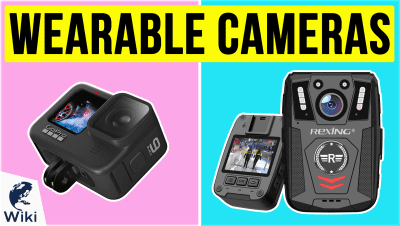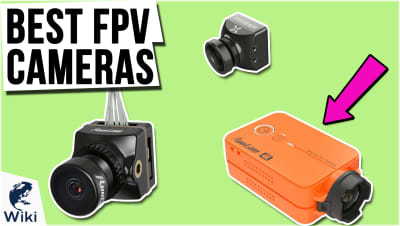The 8 Best Webcams

This wiki has been updated 40 times since it was first published in March of 2015. Whether you're video chatting with family and friends, starting a social media channel, or setting up professional teleconferencing in the office, a quality webcam is a good place to begin. Offering a wide range of configurations and image qualities, our comprehensive list is sure to include the right solution for your digital streaming needs, whatever your budget may be. When users buy our independently chosen editorial picks, we may earn commissions to help fund the Wiki.
Editor's Notes
July 16, 2021:
We no longer recommend the bulky, expensive Logitech system that's been surpassed by simpler, self-contained units. Instead, we've brought back the Logitech C920S, which is not very recent but still performs great especially considering its low price. Its Full HD resolution is supported by autofocus and automatic light correction, and the overall video quality is good enough that no one should be bothered by the somewhat limited frame rate. The rest of our recommendations have not changed.
July 29, 2020:
As more companies catch up with the 4K resolution standard set by the Logitech Brio Ultra Black, it becomes less forgivable for us to include models like the LilBit RGB-IR from our previous list, which maxes out its resolution at 720p. Among models that max out at 1080p, we wanted to ensure there was at least a standard of 30 frames per second, and in the case of the Vaddio HuddleShot All-In-One, you'll see 60 fps, so even if the connection sputters, it'll still look clean on the other end.
One of our favorites this time around is the Logi 4K Pro Magnetic, which is actually made by Logitech under the banner of their new brand Logi. Its magnetic base will stick to a specific Apple monitor, making it a better choice for owners of that screen than others, but it's still a functional webcam that can adhere to any metal surface with ease.
Another important feature we hope people look out for is a remote control that will allow them to make adjustments to things like zoom, pan, and tilt without having to physically react with the camera or dig into any browser- or app-based interfaces. This is particularly important in the business sector, as you don't want to waste any time unnecessarily fiddling with settings or placement.
June 11, 2019:
Webcams can be an important part of both professional work and play. You'll notice that half of the items on our list are from Logitech, and that's not an accident. As with a number of different types of computer peripherals, they've developed somewhat of a stranglehold on the webcam category, though they certainly aren't the only group to produce a worthwhile product. Among their best are the C920S and the Brio, which capture great HD and UHD pictures, respectively. The C615 is a budget-friendly choice that's perfectly satisfactory to many users, though it doesn't have the most advanced features. At the other end of the spectrum, their PTZ Pro 2 is packed with a host of high-end components and has motorized control of its direction and zoom. In the middle of the price range is the Conference Cam, which is a multipurpose device that combines audio, video, and call control into a single reliable unit.
The Hue HD is a little bit different than the average webcam and it's often used by teachers to make their jobs easier. Travelers who don't demand the best image quality should check out Creative's offering, as it's durable and compact and inexpensive. The LilBit is one of the few available with an infrared camera, which can help secure shared computers among other functions. And if your office can afford it, the Meeting Owl can make videoconferencing particularly easy. Finally, if you're a streamer, Razer's Kiyo is designed specifically for you. It's certified compatible with OBS and XSplit software suites and the integrated light ring helps to keep your beautiful face lit up.
But Doesn't My Computer Already Have a Camera?
Most of us, however, can think of a time before video chat.
The first webcams in the 1990s were installed in public places and provided the kind of live, linked feeds employed worldwide today by everything from police departments to traffic reporters and creepy neighbors. Most of us, however, can think of a time before video chat. You remember when we had to walk to school up hill both ways in ten feet of snow, and we ate dirt and were grateful, and dinosaurs roamed the earth?
Well, those days are gone, and now almost everyone has a camera of some kind built into their devices, be they computers, tablets, or cell phones. But, generally speaking, those cameras aren't so good. Make no mistake, there may be billboards with beautiful pictures from your iPhone 1000 S Plus Infinity Supreme Deluxe LE all over the city, but they weren't taken with the front-facing camera, which is the one you use for video conferencing.
Those front-facing cameras tend to be a fraction of the quality that phone companies place on the back, which is where the "serious photography" takes place.
So, you need something sharper, more capable, and more versatile than those little guys, perhaps for business conferencing, perhaps for personal use. Whatever the need, the cameras available today far outshine their ancient ancestors.
With a combination of today's hardware and video conferencing software, the big screens in your conference room can feel more like windows into a room next door than they might feel like fuzzy broadcasts from the nether reaches of Antarctica. The thing about these technologies is you've got to see them in action to appreciate them.
Just Like a Camera, But Different!
In the age of digital cameras, not too much has changed about what makes one camera sharper or better in low light than another. Most folks go straight to megapixels and only care to compare that number. Please, don't be one of those people.
I don't care how many megapixels your camera sensor has. If the lens letting the light hit it isn't up to snuff, megapixels will never matter. And in the world of lenses there are a few important variables to consider. One of those variables is size.
That's right, and I'm sorry fellas, but this is one of those fields in which size definitely matters.
That's right, and I'm sorry fellas, but this is one of those fields in which size definitely matters. The best telescopes in the world are enormous for a reason, and it's not just about magnification. It's also about light collecting area: the wider the lens is at its first element (the glass part that you see), the more data it can collect. So, a bigger, wider lens is bound to take in more light information. That's also why the best lenses for still photography and big budget movies are so large.
Another thing to consider is aperture, which is a pain to explain technically, but is usually represented by a fairly simple number. Some webcams advertise this number proudly; others never mention it. What you need to know is that the smaller the aperture number is, the more light the lens can let in, and that will drastically improve a camera's performance in bad lighting. What's a good number? Anything below 5.6.
Science Fact: The Webcam's Long Journey to Reality
One of the most pervasive examples of the video call in our culture is, of course, the classic scene of personal failure in Back to the Future 2, in which a beleaguered Future Marty McFly loses his job. The technology was also extensively used in an under-celebrated aquatic sci-fi television series called SeaQuest. There are plenty of examples, but it took a great long while for the technology to catch up with our dreams of it.
That day first came in 1991, when some eminently practical students in the computer laboratory at Cambridge University pointed a web-connected camera at the communal coffee pot outside the Trojan Room. The students gave everybody on the local network access to the live image, as the idea, apparently, was to enable students in other parts of the building to save themselves a trip to the coffee pot in case it was empty. That camera ran for 10 years, and its final image was preserved for all to see.
Later, around the same time the first commercial webcams became available in 1994, the University of San Francisco launched their FogCam, which still runs to this day, and is the oldest webcam still in operation.



